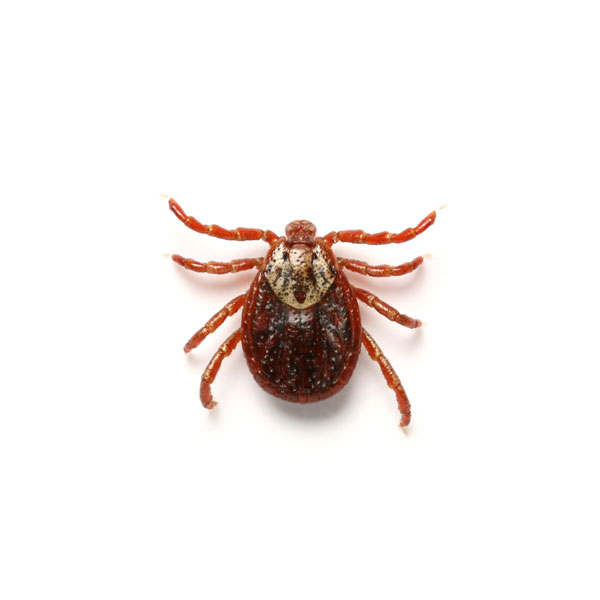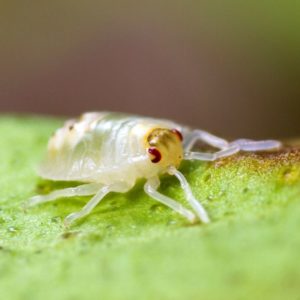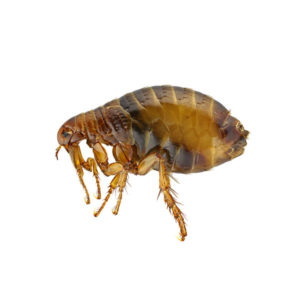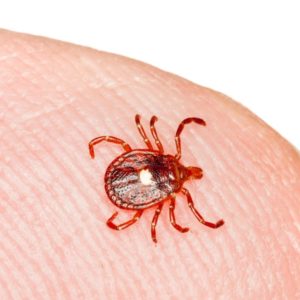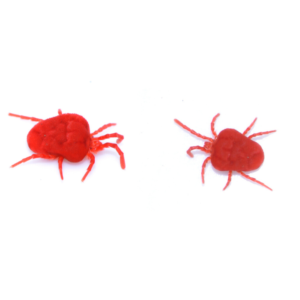American Dog Tick Identification
What Do American Dog Ticks Look Like?
American dog ticks (Dermacentor variabilis) are reddish-brown in color with an oval-shaped body. Adults have distinctive white markings on their dorsal shield, while unfed nymphs and larvae are smaller and darker. After feeding, they can become engorged and swell in size, making them easier to identify.
Signs of a American Dog Tick Infestation
Signs of an American dog tick infestation include finding ticks on pets or humans, especially in areas with dense vegetation or tall grass. Pets may exhibit symptoms such as scratching, irritation, or inflammation at the site of the tick bite. Vigilant inspection of pets and frequent checks of skin and clothing after outdoor activities can help detect infestations early.
Habitat, Diet, Life Cycle & Bites
Where Do American Dog Ticks Live?
American dog ticks are found predominantly in areas with little or no tree cover, such as grassy fields and scrubland, as well as along walkways and trails. Residential areas containing overgrown shrubs, weeds, tall grass, and clutter attract the rodents that are hosts for immature ticks. Adult ticks climb onto a grass blade or other low vegetation, cling to it with their third pair of legs, and then wave their legs when a potential host approaches. As the host brushes against the vegetation, the tick will grab onto the passing animal or human.
Diet of a American Dog Tick
The American dog tick feeds on the blood of various hosts, including mammals like dogs, humans, and other wildlife such as rodents and deer. It requires a blood meal at each stage of its life cycle—larvae, nymph, and adult—to develop and reproduce successfully. It does not consume any other food besides blood.
Life Cycle of a American Dog Tick
The American dog tick undergoes a three-host life cycle. Eggs hatch into larvae, which seek hosts like small mammals. After feeding, larvae molt into nymphs, which also seek hosts, often larger mammals. After feeding again, nymphs molt into adults. Adult ticks then seek larger hosts, including dogs and humans, to feed, mate, and lay eggs, completing the cycle.
Do American Dog Ticks Bite?
Yes, American dog ticks do bite. They attach themselves to their hosts by inserting specialized mouthparts into the skin to feed on blood. Their bites can cause irritation, itching, and discomfort in both humans and animals. Additionally, American dog ticks can transmit diseases such as Rocky Mountain spotted fever and tularemia through their bites, making them a health concern.
Are American Dog Ticks Dangerous?
The highest risk of being bitten occurs during spring and summer, and adult females are most likely to bite humans. Nymphs and adults can transmit diseases such as Rocky Mountain Spotted Fever and Tularemia. To avoid being bitten, apply an insect repellent containing an EPA-registered ingredient, such as DEET. Also, consider wearing long-sleeved shirts and pants, preferably light-colored so ticks will be easy to detect, and tuck pants into socks.
How to Get Rid of Dog Ticks
To get rid of American dog ticks, implement integrated pest management strategies. Regularly inspect pets and yourself after outdoor activities and promptly remove any attached ticks. Keep grass and vegetation trimmed to reduce tick habitat. Use tick control products like spot-on treatments, tick collars, or oral medications for pets
If you are dealing with a tick problem, contact your local tick control experts for assistance.
American Dog Tick Prevention Tips
To prevent American dog ticks, avoid areas with tall grass and dense vegetation where ticks thrive. Wear long-sleeved shirts and pants, and use insect repellents containing DEET or permethrin. Regularly check pets and yourself for ticks after outdoor activities, and promptly remove any attached ticks to reduce the risk of disease transmission.
Need help with American Dog Ticks control?
FAQs
Are American dog ticks harmful?
Yes, American dog ticks can be harmful as they can transmit various diseases to humans and animals through their bites, posing health risks to their hosts.
How do I identify an American dog tick?
American dog ticks are reddish-brown with an oval-shaped body. Adults have distinct white markings on their dorsal shield. After feeding, they become engorged and easier to identify. Regularly check pets and yourself for ticks, especially after outdoor activities.
Do American dog ticks infest homes?
American dog ticks rarely infest homes but can be brought indoors on pets or humans. Once inside, they may detach and attempt to find a suitable host, but they generally prefer outdoor habitats like yards and wooded areas.
What is the difference between the American dog tick and the brown dog tick?
The main difference between the American dog tick and the brown dog tick lies in their appearance and preferred hosts. American dog ticks have an oval body and prefer various hosts, while brown dog ticks have a slender body and primarily infest dogs.

